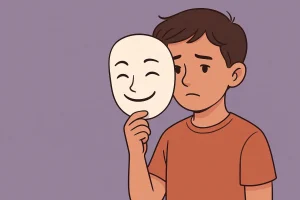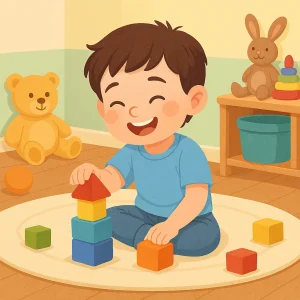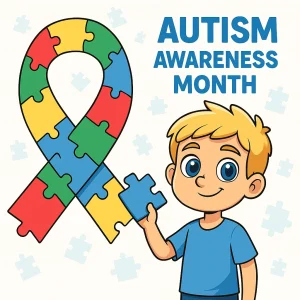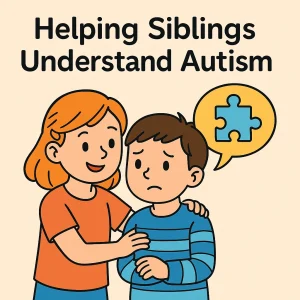7 Easy Home Exercises for Frontal Lisp
By Rajini D
Last Updated: January 25, 2024
Have you ever found yourself or someone close to you struggling to pronounce certain sounds clearly? You’re not alone. A common speech challenge many face is the frontal lisp, where sounds like “s” and “z” are not articulated as they should be. This minor speech impediment, prevalent in both children and adults, can sometimes lead to misunderstandings in communication and, at times, affect self-confidence.
At its heart, a frontal lisp is more than just a speech pattern; it’s a small barrier to the fluent flow of everyday conversations. But here’s the good news: correcting a frontal lisp can be quite manageable, especially with consistent practice at home. That’s right, you don’t necessarily need extensive therapy sessions. Instead, you can embark on this journey of speech transformation right from the comfort of your home.
For a broader understanding of developmental challenges and support, including online speech therapy, explore our Autism Treatment Centre in Hyderabad.
Understanding Frontal Lisp
Now that we’ve introduced the concept of frontal lisps, let’s delve a bit deeper. A frontal lisp is a speech impediment where the /s/ and /z/ sounds are not pronounced correctly. Typically, these sounds are produced with the tongue protruding between the front teeth or just behind them instead of being placed against the alveolar ridge – the bumpy ridge right behind your upper front teeth. This misplacement creates a sound that resembles ‘th,’ making ‘say’ sound like ‘thay’ or ‘zebra’ like ‘thebra.’
This seemingly small deviation in speech can have a more significant impact than one might initially think. It can affect clarity in communication, leading to potential misunderstandings. In children, it can impact social interactions and academic performance, especially in activities involving oral communication. For adults, it can influence professional interactions and self-esteem.
The good news? Frontal lisps are often correctable, and early intervention can be particularly effective. Starting correction exercises at a young age helps establish proper speech patterns before the lisp becomes a more ingrained habit. But it’s never too late to start! Even for adults, with regular practice and the right techniques, improvements in speech clarity are achievable.
One of the most empowering aspects of addressing a frontal lisp is that much of the work can be done at home. With a series of straightforward and engaging exercises, you can embark on this journey of speech transformation in a familiar and comfortable environment. This approach not only makes the process less daunting but also allows for a more consistent and personalized practice routine.
Also Read: What is Lisp: How Speech Therapy can help you deal with it
7 Home Exercises for Frontal Lisp Correction
Embarking on the journey to correct a frontal lisp can be quite empowering, especially when you have the right tools at your disposal. Here are seven easy-to-follow exercises that you can practice at home. These exercises are designed not just for effectiveness but also to be engaging and enjoyable, especially for children.
1. Nose Breathing Practice
Purpose: To encourage nose breathing over mouth breathing, which impacts tongue positioning and speech clarity.
How to Do It:
- Focus on taking slow, deep breaths through your nose.
- Practice this for a few minutes each day, gradually increasing the time.
- This exercise helps in retraining the tongue to rest in the correct position, enhancing speech clarity.
Also Read: How Does Chronic Stress Affect Your Health?
2. Mirror Technique
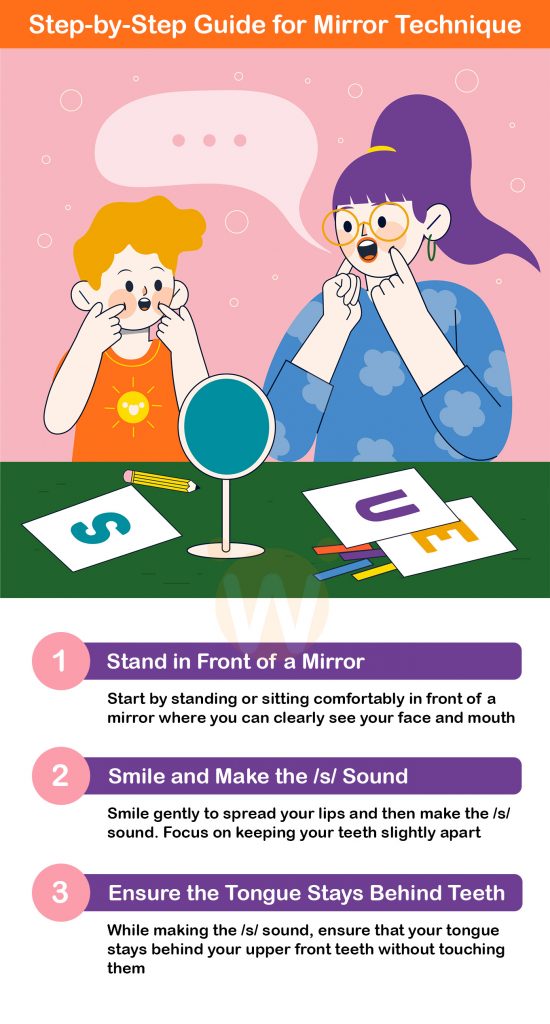
Purpose: To use a mirror to monitor and correct tongue placement, making speech exercises more interactive and fun.
How to Do It:
- Stand in front of a mirror with your child.
- Ask them to smile and then make the /s/ sound, ensuring their tongue stays behind their teeth.
- Make it a game, such as the “snake in a cage,” where the tongue (snake) must stay within the teeth (cage).
For more interactive speech therapy techniques, especially suited for children, explore our resources on Speech and Language Milestones 2 to 3 Years.
3. Elicitation Techniques
Purpose: To practice the exploding /t/ sound, aiding precise tongue movement.
How to Do It:
- Say four consecutive /t/ sounds followed by an extended /s/ sound, like “t-t-t-tssss.”
- This helps the tongue find the right position to make the /s/ sound.
- Turn it into a fun game like “popping tires” for children.
Also Read: Articulation Disorder: A Comprehensive Guide to Clear Speech

4. Tongue Positioning Exercises
Purpose: To help the tongue tip elevate to the alveolar ridge, a crucial step in correct speech articulation.
How to Do It:
- Use popsicle sticks or a similar item to stabilize the jaw, allowing the focus to be on tongue positioning.
- Practice getting the tongue tip to touch the alveolar ridge just behind the upper front teeth.
5. Sound Practice with Words
Purpose: To practice lists of words that contain the /s/ and /z/ sounds in various positions.
How to Do It:
- Start with words that have the /s/ or /z/ sound at the beginning, like “see” or “zoo.”
- Progress to words where these sounds appear in the middle or at the end.
- This gradual progression helps in mastering the sounds in different word positions.
Sound Practice Words for Frontal Lisp Correction
| Sound Position | /s/ Sound Words | /z/ Sound Words |
|---|---|---|
| Initial | Sun, Soap, Sing | Zoo, Zap, Zero |
| Medial | Buses, Glasses, Castle | Roses, Puzzle, Lizard |
| Final | Cats, Class, Kiss | Buzz, Fuzz, Jazz |
Also Read: What is the Relation between Communication, Speech and Language? | Speech and Language Therapy
6. Sentence Formation Practice
Purpose: To create sentences using words with target sounds, enhancing speech fluidity.
How to Do It:
- Once comfortable with individual words, form simple sentences like “The sun is shining.”
- Encourage creating fun and silly sentences to make the practice enjoyable.
Read more about Understanding Language Disorders: Causes and Characteristics
7. Conversation Practice
Purpose: To apply the newly learned speech skills in everyday conversations.
How to Do It:
- Engage in regular conversations, gently correcting the /s/ and /z/ sounds.
- Provide positive reinforcement and be patient, as mastering these sounds can take time.
Weekly Exercise Schedule for Frontal Lisp Correction
| Day of the Week | Exercise Name | Duration |
|---|---|---|
| Monday | Nose Breathing Practice | 10 minutes |
| Tuesday | Mirror Technique | 10 minutes |
| Wednesday | Elicitation Techniques | 15 minutes |
| Thursday | Tongue Positioning Exercises | 10 minutes |
| Friday | Sound Practice with Words | 15 minutes |
| Saturday | Sentence Formation Practice | 15 minutes |
| Sunday | Conversation Practice | Throughout the day |
Beyond Exercises: Understanding Different Types of Lisps
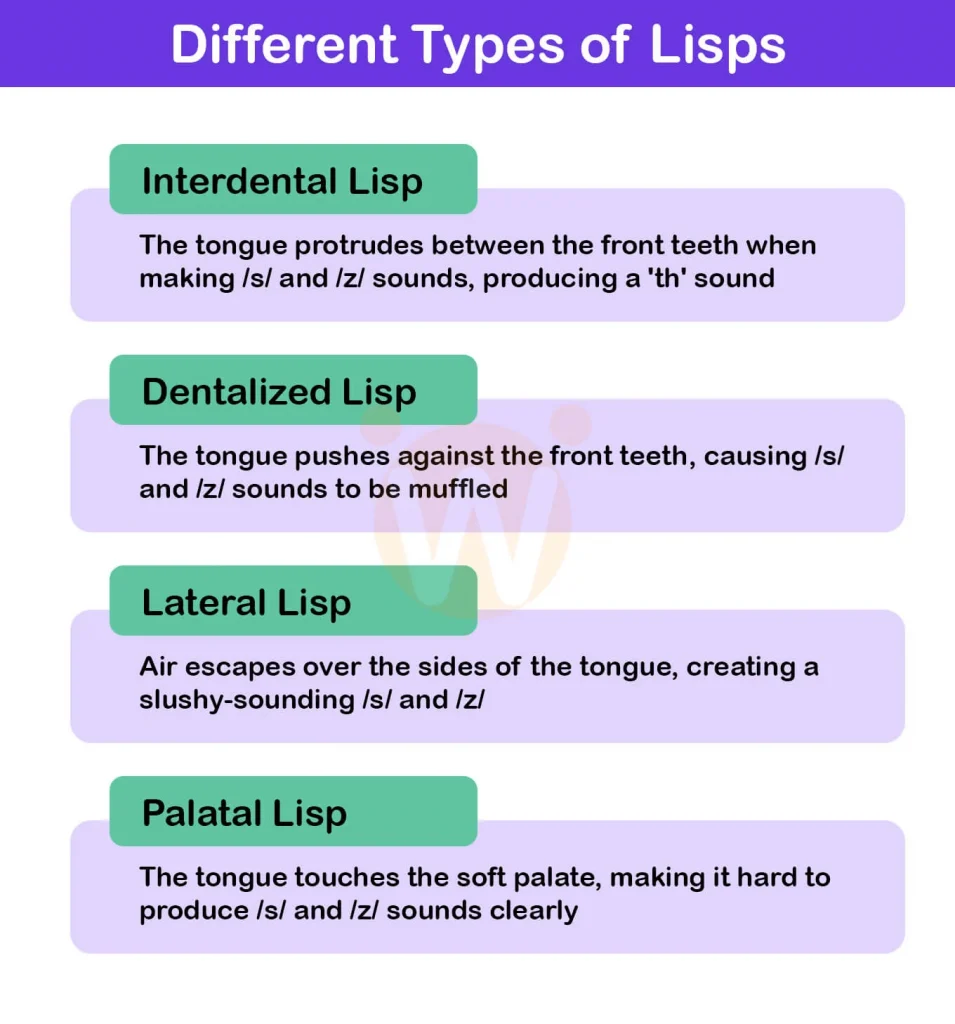
While the home exercises we’ve discussed are a great start, it’s also essential to understand that there are different types of lisps. Identifying the specific type of lisp you or your loved one is dealing with is crucial for effective correction. Let’s briefly overview the various types of lisps: interdental, decentralized, lateral, and palatal.
1. Interdental Lisp
- This is when the tongue protrudes between the front teeth while speaking, especially for /s/ and /z/ sounds.
- Words like “say” might sound like “thay.”
- It’s one of the most common types of lisps and often the easiest to correct with targeted exercises.
2. Dentalized Lisp
- Here, the tongue pushes against the front teeth, not protruding but still affecting sound production.
- The /s/ and /z/ sounds may come out muffled because of the tongue’s position.
- Correction often involves learning to reduce the pressure of the tongue against the teeth.
3. Lateral Lisp
- In a lateral lisp, the air flows over the sides of the tongue rather than directly over the tip, creating a slushy sound.
- It’s often described as sounding “wet” or “slushy.”
- Correcting a lateral lisp can be more challenging and may require more specific exercises focusing on tongue placement.
4. Palatal Lisp
- This occurs when the tongue touches the soft palate, far back in the mouth, while making /s/ and /z/ sounds.
- It’s less common but can significantly impact speech clarity.
- Correction strategies often involve exercises to lower the tongue and adjust its position during speech.
Understanding these types is vital because each requires a slightly different approach to correction. It’s not a one-size-fits-all scenario. For instance, exercises effective for an interdental lisp might not be as helpful for a lateral lisp. That’s why identifying the type of lisp is the first crucial step in choosing the right path towards clearer speech.
When to Seek Professional Help
While the home exercises we’ve discussed are a fantastic starting point for addressing frontal lisps, there are instances where professional guidance becomes essential. Knowing when to seek help from a speech-language pathologist (SLP) can make a significant difference in the effectiveness of speech correction.
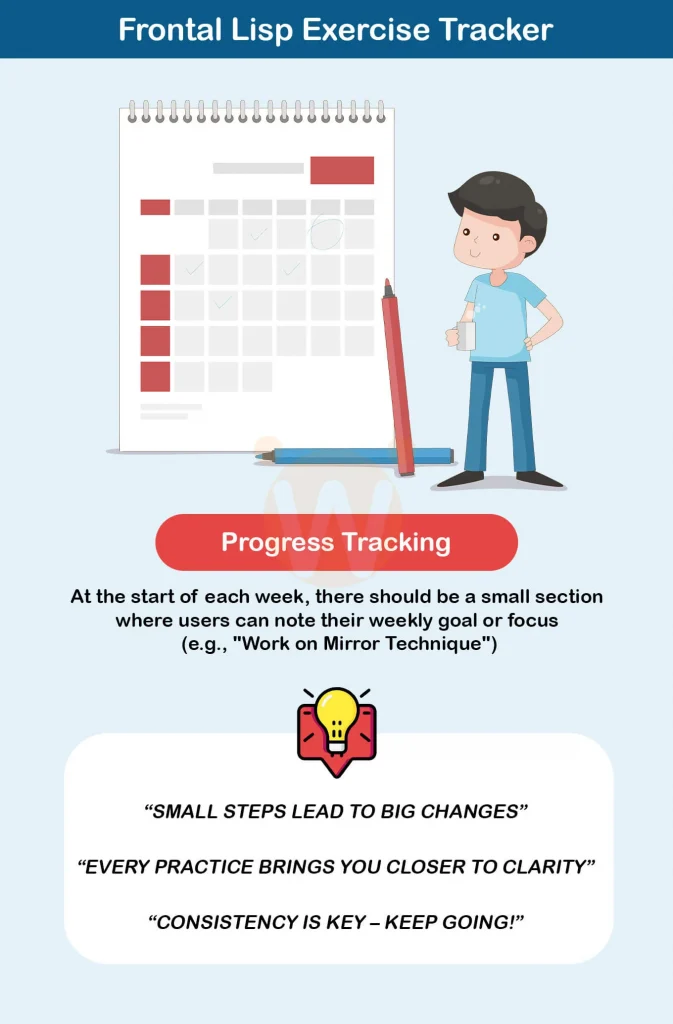
Identifying the Need for Professional Assistance
- Lack of Progress: If you or your child have been diligently practicing the exercises for a considerable time but haven’t noticed any improvement, it might be time to consult an SLP. They can provide a more tailored approach based on specific needs.
- Complex Lisp Types: As we discussed, certain types of lisps, like lateral or palatal lisps, can be more challenging to correct. If these are the types you’re dealing with, an SLP’s expertise can be invaluable.
- Speech Impacting Daily Life: If the lisp is significantly affecting confidence, social interactions, or academic or professional performance, seeking professional help can provide both corrective exercises and emotional support.
- Confusion About Lisp Type: If you’re unsure about the type of Lisp or the best approach to take, an SLP can offer a clear diagnosis and a structured path forward.
For guidance on navigating speech therapy, particularly in online settings, consider reading Navigating Online Speech Therapy Across Ages – A Guide for All.
Conclusion
The journey to correct a frontal lisp, like any journey of self-improvement, requires patience and consistency. It’s important to remember that progress in speech therapy often happens gradually. Celebrate the small victories along the way – each correct sound, each successful practice session – as these are the moments that pave the way to your goal.
At Wellness Hub, we understand that speech improvement is an integral part of holistic wellness. Our approach is not just about correcting a speech pattern; it’s about enhancing overall communication skills, boosting confidence, and improving quality of life. We’re here to support you every step of the way with resources, professional guidance, and a community that understands your journey.
Remember, whether you’re practicing at home or seeking professional help, you’re making a valuable investment in your future. Clear communication is the key to unlocking many doors, both personally and professionally. So keep practicing, stay motivated, and don’t hesitate to reach out for support when needed.
Frequently Asked Questions:
1. What is a frontal lisp?
A frontal lisp is a speech impediment where the /s/ and /z/ sounds are pronounced with the tongue protruding between the front teeth, sounding more like ‘th.’ It’s a common issue that can affect speech clarity but is often correctable with specific exercises.
2. Can frontal lisps be corrected at home?
Yes, many frontal lisps can be effectively corrected at home with consistent practice of specific exercises. These exercises are designed to help retrain the tongue’s placement during speech.
3. How long does it take to correct a frontal lisp?
The time it takes to correct a frontal lisp varies depending on the individual’s consistency with practice, the severity of the lisp, and whether professional guidance is sought. Progress is usually gradual, and improvements can be seen over weeks to months.
4. What are some effective exercises for correcting a frontal lisp?
Effective exercises include nose breathing practice, the mirror technique, elicitation techniques like the exploding /t/ sound, tongue positioning exercises, sound practice with words, sentence formation, and regular conversation practice.
5. When should I seek professional help for a frontal lisp?
Professional help should be sought if there is a lack of progress with home exercises, the lisp type is complex (like a lateral or palatal lisp), the lisp significantly impacts daily life, or there’s uncertainty about the lisp type. Speech-language pathologists can provide tailored support.
6. Are there different types of lisps?
Yes, there are different types of lisps, including interdental (frontal), decentralized, lateral, and palatal lisps. Each type has specific characteristics and may require different correction strategies.
7. Can adults correct a frontal lisp, or is it only for children?
Adults can also correct a frontal lisp. While early intervention is beneficial, adults with a frontal lisp can still make significant improvements with consistent practice and, if necessary, professional help.
8. How does Wellness Hub support speech improvement?
Wellness Hub offers a range of resources and access to professional guidance for speech improvement. Our network includes experienced speech-language pathologists who can provide personalized assistance for various speech impediments.
About the Author:
Rajini Darugupally
Rajini Darugupally, M.Sc., is a licensed Speech-Language Pathologist with over nine years of experience specializing in both early childhood speech and language development and adult communication disorders. She has worked extensively with children facing speech delays, articulation disorders, and social communication challenges, using evidence-based therapy techniques to enhance their communication skills.
In addition to her work with children, Rajini specializes in adult speech and language disorders, including aphasia, traumatic brain injury (TBI), stroke-related communication challenges, dysarthria, and swallowing disorders (dysphagia). Her expertise spans clinical, educational, and teletherapy settings, where she has helped individuals regain and strengthen their communication abilities.
Rajini holds a Master’s degree in Speech-Language Pathology and is deeply committed to empowering parents and caregivers to support speech and language development at home. Currently, she serves as a lead speech therapist at Wellness Hub, where she collaborates with a team of professionals to create personalized therapy plans and educational resources for families.
Book your Free Consultation Today
Parent/Caregiver Info:
Client’s Details:
* Error Message
